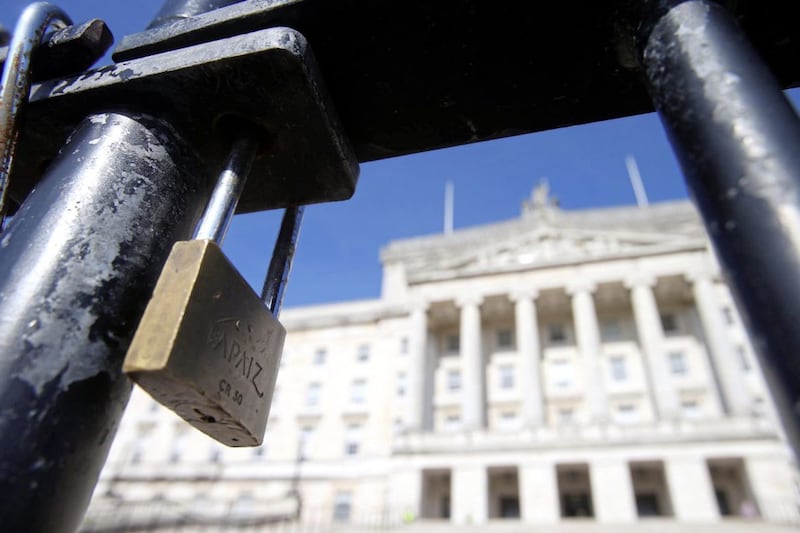In a curious way, Brexit has put a united Ireland back on the agenda.
If you believe Britain will commit economic hara-kiri by leaving the European Union, then you might well be open to the idea that the northern part of this island should save its skin by integrating with the south.
The actual achievement of a united Ireland may not be that much closer, but it has been revived as a topic for discussion. Twenty-odd years ago, a senior unionist introduced me to the concept that, in addition to their loyalty to the Crown, his community also had a serious attachment to the half-crown, ie the financial benefits of being part of the UK. Brexit wasn’t thought of at the time, but if it does lead to economic ruin, while the south continues to prosper within the EU, then perhaps unionists might start to look seriously at the 32-county option.
I can hear members of the majority community in the north saying: “Dream on!” But the vision of a united Ireland is what sustains a lot of nationalists – and I’m not just talking about Sinn Féin. What’s wrong with dreams anyway? Martin Luther King had one and a good deal of it was achieved, albeit with much still to be done.
Bringing about a united Ireland will have to be a 32-county effort. One of the problems is that a lot of people in the south don’t want to think about the north and they start to yawn or scrutinise their mobile phones if you bring up the topic. Likewise, many in the north never give the south a thought if they can help it.
Since Leon Trotsky is back in fashion – he has several adherents in Dáil Éireann – it might be appropriate to re-run his famous quote: “You may not be interested in war, but war is interested in you.” Waging war to achieve Irish unity has thankfully gone out of fashion but, if the island ever does become a single state, it will affect the lives of us all, whether we are following the story or not.
Meanwhile, Catalonia is very much in the news and doubtless a source of inspiration to many Irish nationalists. A small group dedicated to violent methods called Terra Lliure (Free Land) was active from 1978 to 1995 but the vast preponderance of Catalan nationalists are committed to peaceful means. The stand-off with Madrid may test that commitment: hopefully not.
Taoiseach Leo Varadkar expressed concern about the violence that accompanied the recent referendum on Catalan independence but said the government would not be recognising the validity of the Yes vote. Gerry Adams was more positive: “The Catalan people have spoken and their voice must be respected”. He condemned the “violent repression from the Spanish state”.
On a separate issue, the Taoiseach was sharply-critical of Adams in the Dáil because of the Sinn Féin leader’s alleged lack of attention to detail. It is true that Adams tends to focus on the big picture and sometimes resembles a schoolboy with an aversion to homework. That’s why he needs to step aside as leader of the Sinn Féin group in the Dáil, where the likes of Mary Lou McDonald, Pearse Doherty and Eoin Ó Broin are far more effective.
But despite the constant attacks on Adams by political opponents and elements of the media, his departure as overall party leader would probably lead to a decline in support and the loss of parliamentary seats at the next southern general election.
Among ordinary punters, aka the Plain People of Ireland, Adams still has a certain iconic status as a symbolic republican figure and I have even heard him bemoaning the number of times he is approached to take part in “selfie” photographs.
He is also the most public and visible link between Sinn Féin north and south. If and when he finally moves on, the party’s cross-border unity will be tested. The difference in the political culture between north and south is such that the two wings of Sinn Féin will almost inevitably drift apart in practical, day-to-day terms.
And what if the party somehow ends up being offered a partnership in a government coalition but on condition that Adams stays outside the cabinet room? It’s hard to see Sinn Féin bowing the knee on that issue.
As I write I am looking at a photograph of the 1948-51 inter-party government showing former IRA chief of staff Seán MacBride pictured with Fine Gael leader Richard Mulcahy, who oversaw the execution of 77 republicans in the Civil War. If two such disparate figures could sit at the same cabinet table, then nothing can be ruled out.
Adams is expected to reveal his “future intentions” at the Sinn Féin ard fheis in Dublin on November 17-18. Should be interesting.
#ddebreadun








